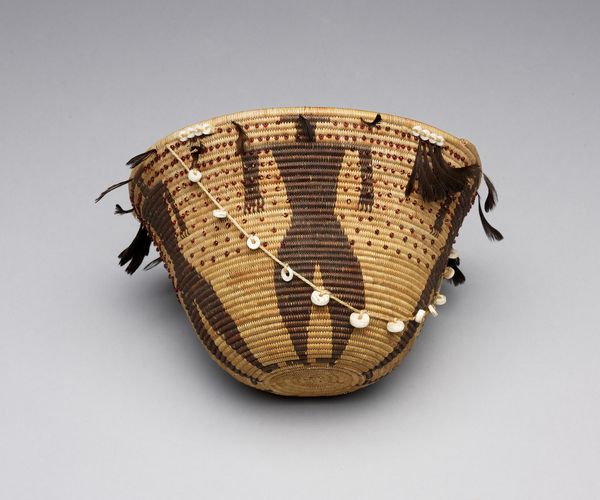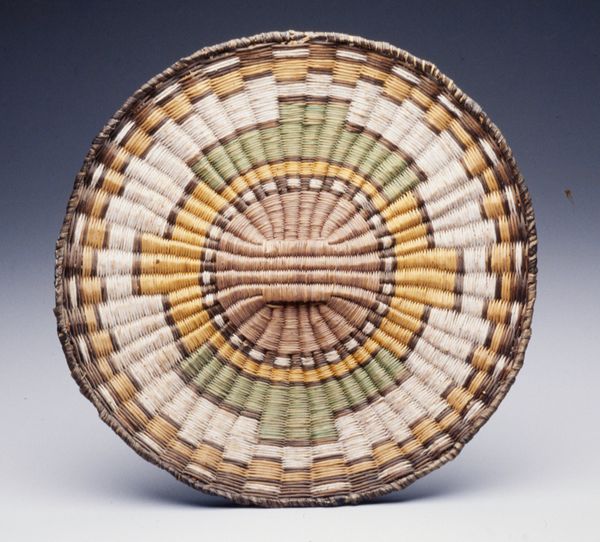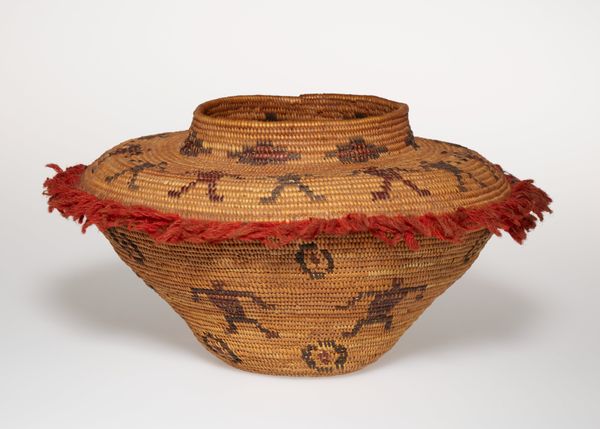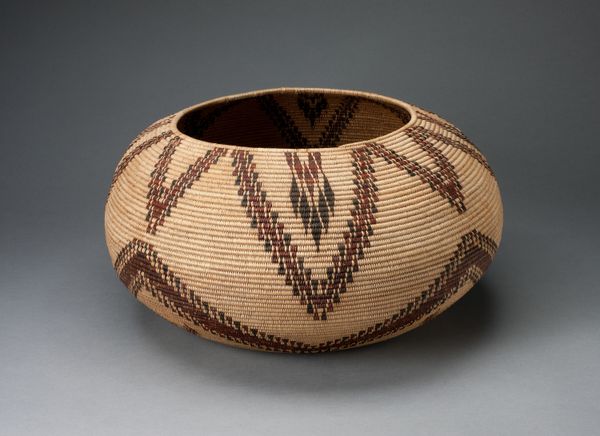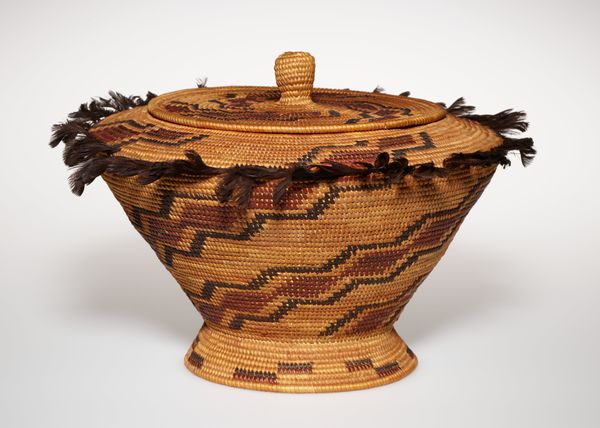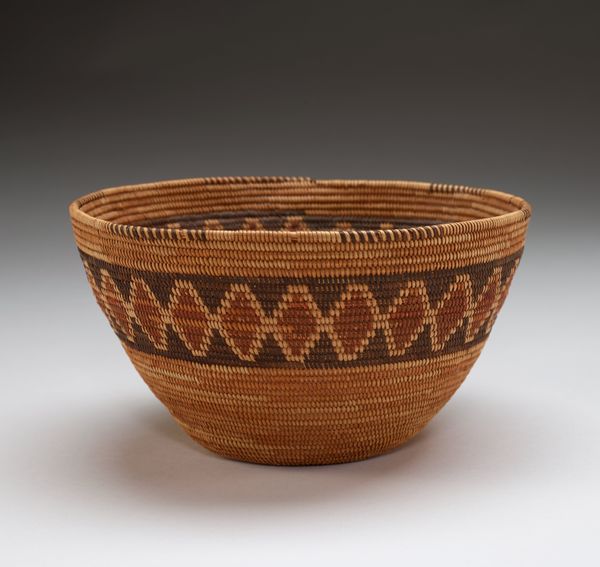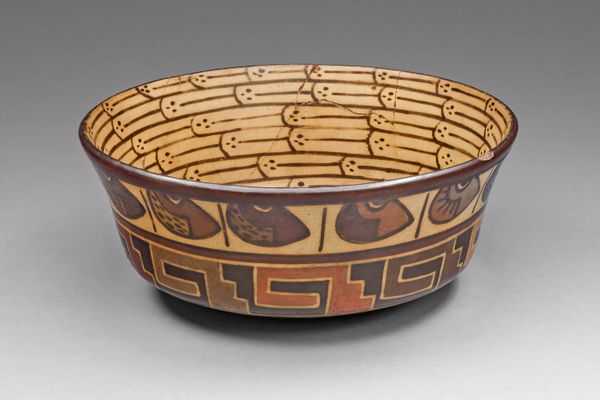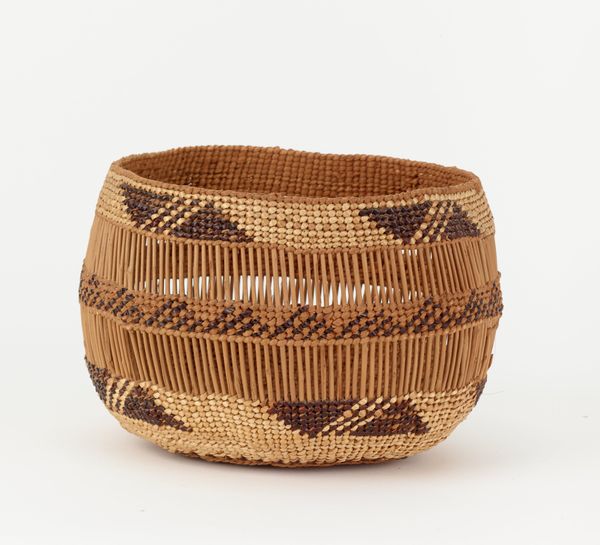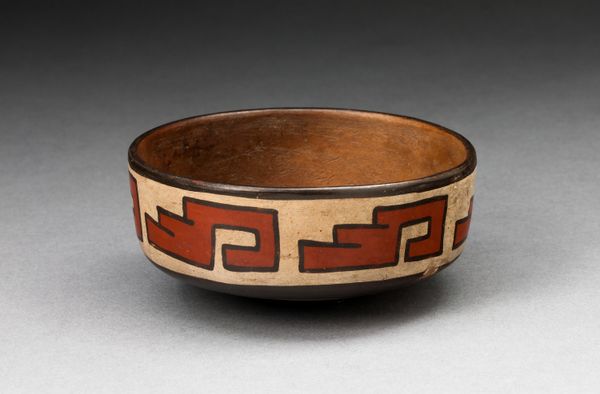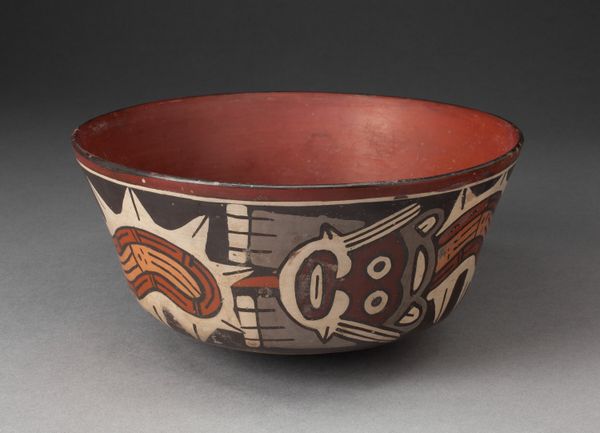
#
ceramic
#
decorative-art
#
indigenous-americas
Dimensions: 2 × 2 1/2 × 2 1/2 in. (5.08 × 6.35 × 6.35 cm)
Copyright: No Known Copyright
This covered quillwork box was made by an Anishinaabe artist using birch bark and porcupine quills. The box is a testament to the skill and artistry of Indigenous peoples and also the complex relationship between Indigenous cultures and European settlers in North America. The Anishinaabe, also known as the Ojibwe or Chippewa, are one of the largest groups of Native Americans in North America. Their traditional territory spans parts of present-day Canada and the United States, including the Great Lakes region where this box was made. The floral motifs reflect cultural adaptation, with European settlers introducing new materials and designs, which were then integrated into Indigenous art forms. The boxes themselves were often traded to Europeans and Euroamericans as curiosities. To fully appreciate the depth of meaning, we need to investigate colonial history, trade networks, and the evolving dynamics between Indigenous communities and European settlers. It reminds us that art is not created in a vacuum, but within specific social and institutional contexts.
Comments
minneapolisinstituteofart almost 2 years ago
⋮
The Anishinaabe woman artist who created this intricately adorned and finely woven basket utilized locally harvested porcupine quills, birchbark, and sweetgrass. Artists often incorporated abstraction into their work, layering quills in complex patterns and forms that reveal both technical mastery and artistic ingenuity. For more than two hundred years, Anishinaabe women sold many of their birchbark containers and baskets to non-Native people to sustain their families during a time of major cultural disruption, including forced assimilation and removal onto governmental and religious controlled reservations. Quillboxes exemplify the power of Anishinaabe women to create a new and unique artform that expresses cultural and individual resiliency and creativity. Artist Mary Giles, who gave her collection of quillwork boxes made by Anishinaabe women to Mia in 2019, was a basket maker herself. She recognized the importance of this artform and admired the meticulous craftsmanship required to create these works. She displayed nearly a hundred quillwork and birchbark boxes in her Stillwater, MN home, collected over decades through her travels across the Upper Midwest.
Join the conversation
Join millions of artists and users on Artera today and experience the ultimate creative platform.

